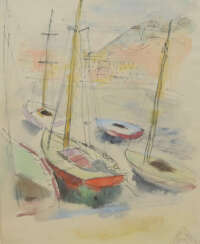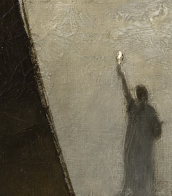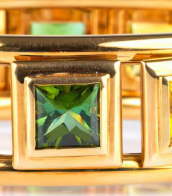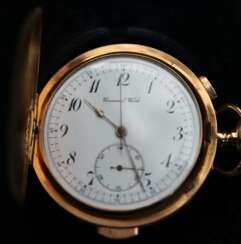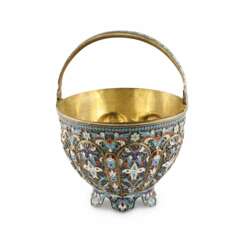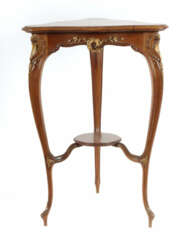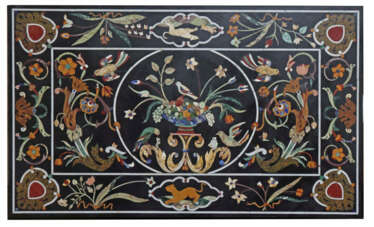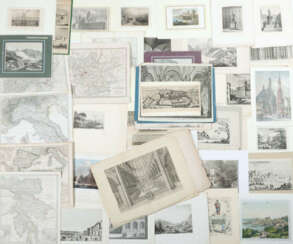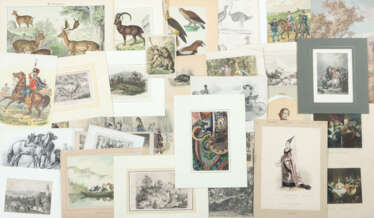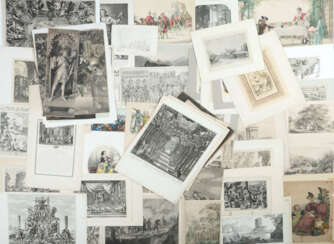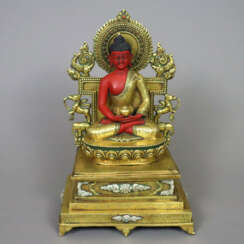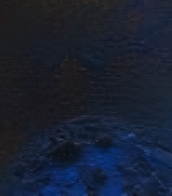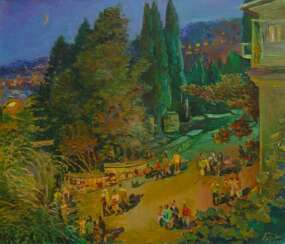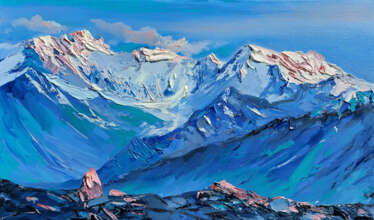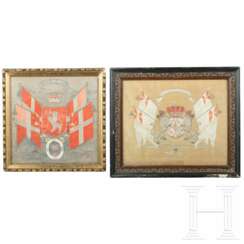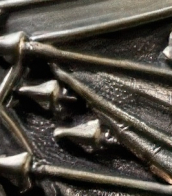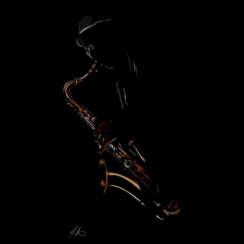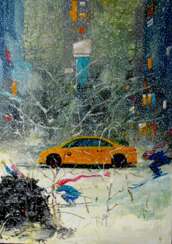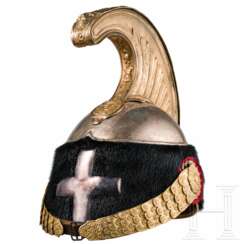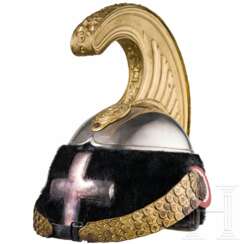145 Items by auctions and galleries:
genève
Bulbs No.2
Alena Martsyanava (b. 1983)  Shop Martsyanava Alena
Shop Martsyanava Alena
Alena Martsyanava
06.04.1983
Byelorussia
Окончила Червенскую школу искусств. Дальше художеству не обучалась, закончила МГЛУ. Продолжаю писать, рисовать. 3 Выставки в Минске, 2 в родном городе Червене. Участие в польском аукционе. Работы проданы в США, Ирландию, Великобританию, Бельгию, Голландию, Польшу.
Artist shop
Martsyanava Alena
Byelorussia
Number of products: 18
Evening maritime city Painting by Aleksandr Dubrovskyy
Aleksandr Dubrovskyy (b. 1949) 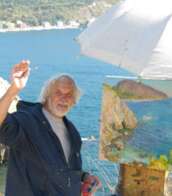 Shop Dubrovskyy Aleksandr
Shop Dubrovskyy Aleksandr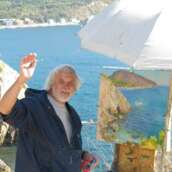

Aleksandr Dubrovskyy
10.06.1949
Ukraine
https://mssg.me/dubrovskyy
1949: Alexandr Dubrovskyy Ukrainian painter - impressionist
1956-1965: Studies at the studio of fine arts in Enakievo (Ukraine)
1969: Graduates from Kharkiv State Art School (professor Tanpeter, Ukraine)
1972-1984: Participated in numerous prestigious personal and collective exhibitions of the Soviet Union and abroad
1973-1975: Exhibitions of contemporary Soviet art (Tokyo, Kyushu, Japan)
1973-1984: Creative trips to the art center of SEDNIV (Ukraine). Worked together with and learned at the same time from outstanding painters such as Konstantyn Lomykin, Fedor Zakharov, Nikolay Glushchenko, Viktor Shatalin, and Tatyana Yablonskaya.
1984-2019: Participated in the personal and collective exhibition all around Ukraine and abroad
1985-1993: International exhibitions of contemporary art (Algeria)
1987: Member of National Union of Artists of Ukraine
1992: An exhibition of artists of the St. Petersburg School of Painting (ARCOLE Gallery, Paris, France)
1995-2004: Designed & Created mosaic panels at the Cathedral of Saint Mina (Alexandria, Egypt)
2003-2005: Designed & Created mosaics in St.George's Cathedral of Vydubitsky Monastery (Kyiv, Ukraine)
2007-2020: Exhibitions of Plein Air painting (All around Ukraine and abroad)
Permanent exhibitions:
• Museum "Art Gallery" in the Golitsyn Palace (Trostyanets, Sumy region, Ukraine)
• Horlivka Art Museum - shows the painting of the Soviet period (Horlivka, Donetsk region, Ukraine).
• Lebedin City Art Museum. B.K. Rudneva (Lebedin, Sumy region, Ukraine)

Artist shop
Dubrovskyy Aleksandr
Ukraine
Number of products: 37
Snow splendor
Anna Mikhaylina (b. 1992)  Shop Mikhaylina Anna
Shop Mikhaylina Anna

Anna Mikhaylina
05.05.1992
Russia
https://www.youtube.com/channel/UCDT7S-FehlLkRDEAOB8E0Lg?sub_confirmation=1
Веб сайт: http://ideart.ru/
Instagram: https://www.instagram.com/ejsmontart/
Facebook: https://www.facebook.com/AA-Ejsmont-painting-103803388102858/?modal=admin_todo_tour

Artist shop
Mikhaylina Anna
Russia
Number of products: 5
Mountain peak
Anna Mikhaylina (b. 1992)  Shop Mikhaylina Anna
Shop Mikhaylina Anna

Anna Mikhaylina
05.05.1992
Russia
https://www.youtube.com/channel/UCDT7S-FehlLkRDEAOB8E0Lg?sub_confirmation=1
Веб сайт: http://ideart.ru/
Instagram: https://www.instagram.com/ejsmontart/
Facebook: https://www.facebook.com/AA-Ejsmont-painting-103803388102858/?modal=admin_todo_tour

Artist shop
Mikhaylina Anna
Russia
Number of products: 5
Mountains Of Italy
Anna Mikhaylina (b. 1992)  Shop Mikhaylina Anna
Shop Mikhaylina Anna

Anna Mikhaylina
05.05.1992
Russia
https://www.youtube.com/channel/UCDT7S-FehlLkRDEAOB8E0Lg?sub_confirmation=1
Веб сайт: http://ideart.ru/
Instagram: https://www.instagram.com/ejsmontart/
Facebook: https://www.facebook.com/AA-Ejsmont-painting-103803388102858/?modal=admin_todo_tour

Artist shop
Mikhaylina Anna
Russia
Number of products: 5
The azure peaks
Anna Mikhaylina (b. 1992)  Shop Mikhaylina Anna
Shop Mikhaylina Anna

Anna Mikhaylina
05.05.1992
Russia
https://www.youtube.com/channel/UCDT7S-FehlLkRDEAOB8E0Lg?sub_confirmation=1
Веб сайт: http://ideart.ru/
Instagram: https://www.instagram.com/ejsmontart/
Facebook: https://www.facebook.com/AA-Ejsmont-painting-103803388102858/?modal=admin_todo_tour

Artist shop
Mikhaylina Anna
Russia
Number of products: 5
Phantom Feeling
Galina Khabarova (b. 1986) 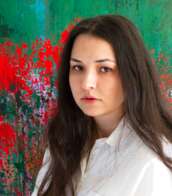 Shop Khabarova Galina
Shop Khabarova Galina

Galina Khabarova
14.10.1986
Russia
My paintings are abstract in nature and are created anew each time in the process of intuitively following the imagination, in most cases without any preliminary sketches. They are multi-layered surfaces with a rich texture that exposes the underlying layers of paint, with rhythm, direction and a complex color pattern.
When I start my work, I mentally return to a moment of the past, real or imaginary, when I experienced certain emotions. When I relive it within myself, I work on transfering these emotions to the surface of the canvas. This process is akin to meditation, when emotional images splash out on the painting, as if without my conscious participation. A paint stroke is a reflection of a certain feeling. As emotions quickly replace each other, so do paint strokes overlap each other in the process of my work. Starting with some colors and shades, I can finish the work with completely different ones, covering and overlapping each layer many times. But, like the emotions experienced, each stroke leaves its mark on the surface, forming a unique texture.

Artist shop
Khabarova Galina
Russia
Number of products: 8
Saxophone
Arina Znamenskaya (b. 2000)  Shop Znamenskaya Arina
Shop Znamenskaya Arina

Arina Znamenskaya
22.11.2000
Russia
Родилась 22 ноября 2000 года в Москве, и в возрасте 13 лет я уехала учиться в Великобританию, где закончила школу по программе интернациональный бакалавриат. В данный момент учусь в Лондоне на архитектора, параллельно пишу картины и занимаюсь графическим дизайном. Я пишу картины акрилом и акварелью, а так же рисую на графическом планшете. Творчество - это мой главный способ самовыражения. Рисованием и прикладным искусством я занимаюсь с детства, окончив детскую школу искусств СТАРТ в Москве в возрасте 11 лет. Моими главными достижениями в сфере искусства на данный момент являются:
— Победа в престижном художественном конкурсе Aidan Meller Art Prize в Марте 2019
— Участие в выставке в Aidan Meller Gallery в Оксфорде
— В 18 лет Провела собственную выставку фотографий и художественных работ “BodyBuilding”. Мои работы фокусировались на эстетике и структуре человеческого тела и архитектурных сооружений.
— Виртуальная международная выставка в сфере архитектуры при AA school of Architecture в Лондоне в мае 2020

Artist shop
Znamenskaya Arina
Russia
Number of products: 10
It is snowing in New York
Sergiy Roy (b. 1958)  Shop Roy Sergiy
Shop Roy Sergiy

Sergiy Roy
04.04.1958
Ukraine
EXHIBITIONS:
INTERNATIONAL ART EXHIBITION,
MOSKOW, RUSSIA, WARSAW, POLAND, 1984
BASHKIRTSEV’S ART EXHIBITION, MUSEUM OF FINE ART, POLTAVA, UKRAINE, 1988
AVAN/ART IN ROVANIEMI, FINLAND, 1990
ANNUAL NATIONAL ART EXHIBITION, KYIV, UKRAINE, 1990
AVAN/ART, MUSEUM OF FINE ART, MURMANSK, RUSSIA, 1990
AVAN/ART IN JACKSONVILLE, KENT GALLERY, JACKSONVILLE, FLORIDA, USA, 1991
AVAN/ART IN JACKSONVILLE, DAWNTOWN GALLERY, JACKSONVILLE, FLORIDA, USA, 1991
ME+ME+ME+ME+…/AVAN CENTER OF CULTURE MURMANSK, RUSSIA, 1992
NATIONAL EXHIBITION ART GALLERY, KIYV, UKRAINE, 1993
PAN-UKRAINE, DNIPROPETROVSK, UKRAINE, 1995
EXHIBITION MODERN ART GALLERY, POLTAVA, UKRAINE, 2003
REGIONAL EXHIBITION MODERN ART GALLERY, POLTAVA, UKRAINE, 2005
REGIONAL EXHIBITION MODERN ART GALLERY, POLTAVA, UKRAINE, 2007
KYIV-ART. 2008 HOUSE OF TEACHER ,KYIV , UKRAINE 2008
M-ART GALLERY KHARKIV, UKRAINE 2010
IN GARDENS OF VICTORY GALLERY , ODESSA, UKRAINE 2011
Florence Design Week "Crossing People" Exhibition,FLORENCE,ITALY,2013
Gallery Fine ART, POLTAVA,UKRAINE,2013
Gallery " TRYPTYH", KYIV,UKRAINE,2014
Fine ART Gallery ,POLTAVA,UKRAINE,2014
Ukrainian Free Universety, MUNKHEN,GERMANY,2014-2015
ARTGESCHOSS, internationale kunstausstellung, Salzgitter Bad,GERMANY,2017
Art Revolution Taipei,Taiwan , 台北新藝術博覽會,2018
Private collections:
Mr. Roman Kupchinsky (USA, New York)
Dr. Ulf Bethmann (Germany, Hamburg)
Ms. Monika Platek (Poland, Krakov)
Museums and collection:
Jacksonville College (Florida, USA);
Khmelnitsckiy National Art Museum (Ukraine);
Poltava Art Museum (Ukraine);
Modern Art Gallery Poltava (Ukraine);
Austria, Australia, Dubai, USA, Germany, England, Russia, Israel, Irland, New Seland, Taiwan, Ukraine,Poland.

Artist shop
Roy Sergiy
Ukraine
Number of products: 208



